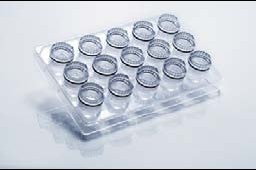Difference between revisions of "Main Page/BPHS 4090/Lysozyme Crystallization"
| Line 39: | Line 39: | ||
<li>25% Glycerol</li></ul> | <li>25% Glycerol</li></ul> | ||
<h3>Procedure</h3> | <h3>Procedure</h3> | ||
| + | [[File:Fig1_crystallization_plate.png|400px|Crystallization Plate|right]] | ||
Revision as of 13:14, 2 September 2010
Contents
Introduction
Three-dimensional Protein Structures
X-Ray Crystallography
What is a Protein Crystal?
Suggested Reading:
Introduction to Macromolecular X-Ray Crystallography by Esko Oksanen and Adrian Goldman (Chapter 10 in Comprehensive Natural Products II Chemistry and Biology, Editors-in-Chief: Lew Mander and Hung-Wen (Ben) Liu ISBN: 978-0-08- 045382-8).
Alexander McPherson. Introduction to protein crystallization. Methods, 34, 254-265.
Protein X-Ray Crystallography Methods by Roger S. Rowlett, Department of Chemistry, Colgate University
Websites
- http://www.ruppweb.org/level1/new_tutorials_page.htm
- http://www.sdsc.edu/Xtal/edu.index.html
- http://www.hamptonresearch.com
- http://www.pxuniverse.com/
Experimental
You will be provided with the pure protein (lysozyme) that you will be crystallizing. You will also be provided with the crystallization solution. In real life you perform crystallization trials with your homogeneously pure protein and examine your plates looking for protein crystals.
Crystallization Experiment I
Stock Solutions
Protein
Lysozyme at 25, 50, 75 and 100 mg/ml dissolved in 0.02 M sodium acetate pH 4.6
Lysozyme Crystallization Solution
- 0.6 M sodium chloride
- 0.1 M sodium acetate pH 4.6
- 25% Glycerol
